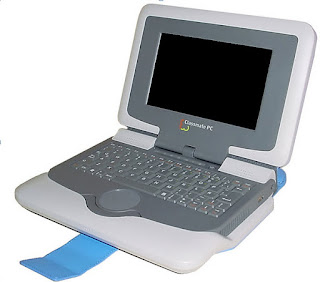The problem of creating an
inexpensive PC for developing countries dominates the minds of
"light" the computer industry has been a whole year. Probably each of
us have heard about the project hundred dollar laptop with the ability to work
in the Internet and office applications like primitive text editor Notepad.
However, in this project were opponent,
the company Intel, for example, generally refused to believe in the possibility
of creating something like this. Yes, indeed, to issue a no computer with a
strike price of less than 200 conventional units without targeted subsidy
transfers from the budget simply cannot and if you can, then that will be
inside such a device, it's frightening to think. But, as it was agreed, Intel
unveiled its response to the hundred-dollar laptop computer named Eduwise.
However, the price of such a solution is slightly higher and is already $ 400.
Paul Otellini, CEO of Intel,
gave a talk on this subject at the World Congress of Information Technology,
which was in Austin, Texas. It is learned that the development plans of Intel provide
capital to one billion dollars, which the company will invest in developing
countries within five years. According to Paul Otellini, who was against the
project "PC for $ 100," Eduwise only be able to answer the problems
that are associated with the digital "revolution" in developing
countries. Contrary to MIT (promoting the first project), whose goal was to
reduce all costs to a minimum, Intel offers a relatively expensive
"machine." As already mentioned, the price of the laptop is 400
dollars, which is as much as 4 times more. However, Intel justifies this
situation, in our view correctly. The company intends to equip your computer
with all the necessary modern equipment and thus help developing countries to
keep pace with the times in the age of digital technology and the Internet.
Eduwise is equipped with WiFi
wireless technology and WiMax this latter development was supported by Intel,
cost-effective low energy consuming processor, 7-inch LCD display and only the
flash-memory in order to increase the battery life of the computer. Conceived
by Intel but manufactured by third-computer must be equipped with software
dedicated to education. However, Intel clearly does not state what kind of
system will be used in a laptop - Windows or Linux, but the presence of the
chief administrator of Microsoft - Steve Ballmer leads to some assumptions. In
his brief speech, Steve is extremely positively about the project Eduwise.
Recall that Microsoft was "forced out" MIT project in favor of the
Linux operating system and not to miss another chance, Microsoft would like to
see Windows on computers Eduwise.
As we have already noted,
Intel has confirmed its intention to invest up to one billion dollars in
developing countries. According to our information, the money should allow the
form of about ten million teachers in the field of new technologies. Part of
the sum should also be directed to the project Eduwise. The program is a dual
purpose for us, first, to help the countries of the third world close the gap
to the developed industrial, and secondly by providing, for example, new
equipment, Intel will a organize its vast network infrastructure outside the
United States.

0 comments:
Post a Comment